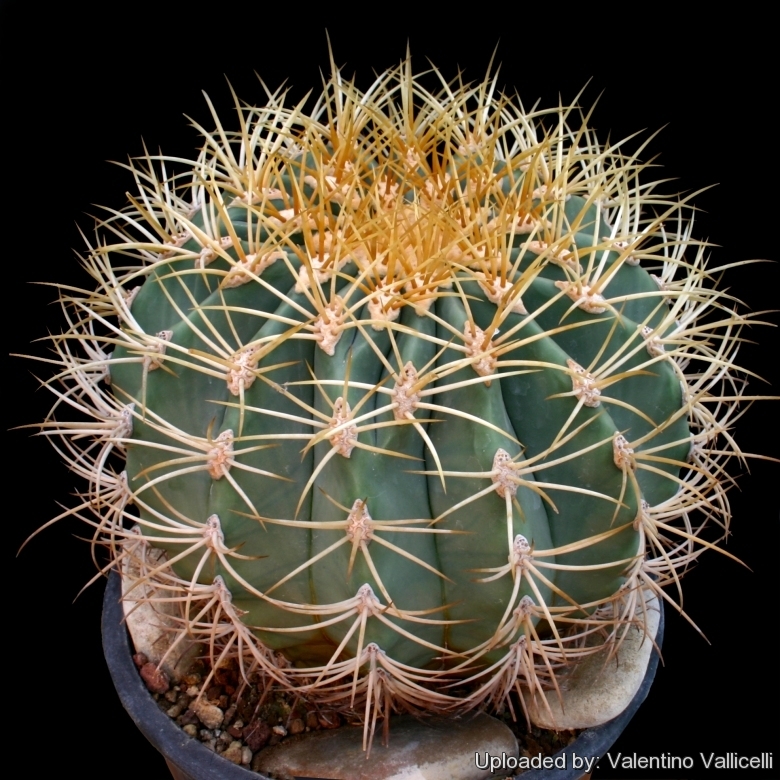
Ferocactus diguetii Photo by: Valentino Vallicelli
It is the largest of all of the genus Ferocactus and reaches 4 m tall and may grow almost 1 m in diameter.
Origin and Habitat: It is an island endemic from the Gulf of California, Baja California Sur, Mexico, on the islands of Carmen, Santa Catalina, Cerralvo, Danzante, and San Diego (extent of occurrence is less than 2,000 km2). The species is very abundant on the islands of Catalana and Cerralvo.
Altitude range: 10 to 300 metres above sea level.
Habitat: The species grows in desert scrub on gravely granitic slopes on rocky hills in the lower sonoran desert and on island in the Gulf of California.
Ecology: This cactus (like many other species — both plants and animals — found on islands) shows the phenomenon of gigantism, being larger and more robust than its nearest relatives in continental regions. There are no major threats for Ferocactus diguetiiSN|16050]]SN|16050]].
Synonyms:
See all synonyms of Ferocactus diguetii
back
Accepted name in llifle Database:Ferocactus diguetii (F.A.C.Weber) Britton & RoseCactaceae (Britton & Rose) 3: 131. 1922 [12 Oct 1922]Synonymy: 3
Accepted name in llifle Database:Ferocactus diguetii subs. carmenensis (G.E.Linds.) F.Wolf & R.WolfFerokakt. Baja California 93. 2004 [Jul 2004]Synonymy: 2
back
Common Names include:
ENGLISH: Giant Barrel Cactus
Description: Ferocactus diguetiiSN|16050]]SN|16050]] is a spectacular cactus that grows up to 4 m tall. It is among the largest species of column-like cacti, usually unbranched, forming a solitary column. The plants from from Santa catalina are probably the largest and most spectacular Ferocactus.
Derivation of specific name. This member of the Cactaceae family was given this name for Léon Diguet (1859–1926), French chemist and explorer in Mexico.
Stem: Massive, darck green, globular flattened in juvenile specimens, then columnar. The usual height of this species is to 2 meters, but some specimens can reach the 4 m of eight. and 60-100 cm in diameter.
Ribs: Slightly tuberculate, vertical, straight or wavy in moribund specimens, up to 3 cm tall. Mature plants have 25 to 35 ribs.
Areoles: Elongated, 1 x 2 cm wide, with short tan wool which turn chalky-white/grey and finally erodes away in age.
Spines: 4 to 8 spines of which one central (often up to 10 in juvenile specimens), clear yellow or sometime reddish or brownish, almost all alike, subulated, not ringed or hooked, slightly curved outward, up to 7 cm long.
Flowers: Fiery reddish to orange, funnelform are about 4 cm long and wide. Floral tube with fimbriate scales on ovary, inner perianth segment, oblanceolated, up to 2 cm long, 8 mm wide, dark red with yellowing margins, external perianth segments brownish-yellow. Stamens basally yellow fading red toward te tips, style orangish/red up to 18 mm long with longitudinal ridges continuing in stigma lobes, this are yellow upp to 5-10 mm long.
Blooming season: Flowers from March to May.
Fruits: Up to 3 cm long and 3 cm wide They tend to dry at maturity and split open through a basal pore.
Seeds: Glossy brown, irregular, 1,5 mm wide.
Remarks: The variety carmenesis (Ferocactus diguetiiSN|16050]]SN|16050]] subs. carmenensis) only reaches 1 m in height.
Bibliography: Major references and further lectures
1) Edward Anderson “The Cactus family” Timber Press, Incorporated, 2001
2) James Cullen, Sabina G. Knees, H. Suzanne Cubey "The European Garden Flora Flowering Plants: A Manual for the Identification of Plants Cultivated in Europe, Both Out-of-Doors and Under Glass" Cambridge University Press, 11/Aug/2011
3) David R Hunt; Nigel P Taylor; Graham Charles; International Cactaceae Systematics Group. "The New Cactus Lexicon" dh books, 2006
4) N. L. Britton, J. N. Rose “The Cactaceae. Descriptions and Illustrations of Plants of the Cactus Family.” Volume 4, The Carnegie Institution of Washington, Washington 1923
5) Ted J. Case, Martin L. Cody, Exequiel Ezcurra “A New Island Biogeography of the Sea of Cortes” Oxford University Press, 21 November 2002
6) Stewart W. Aitchison “The Desert Islands of Mexico's Sea of Cortez” University of Arizona Press, 2010
7) Urs Eggli, Leonard E. Newton “Etymological Dictionary of Succulent Plant Names” Springer Science & Business Media, 29 June 2013
8) León de la Luz, J.L., Gómez-Hinostrosa, C. & Hernández, H.M. 2013. Ferocactus diguetii. The IUCN Red List of Threatened Species 2013: e.T151761A558650. http://dx.doi.org/10.2305/IUCN.UK.2013-1.RLTS.T151761A558650.en. Downloaded on 31 October 2016.
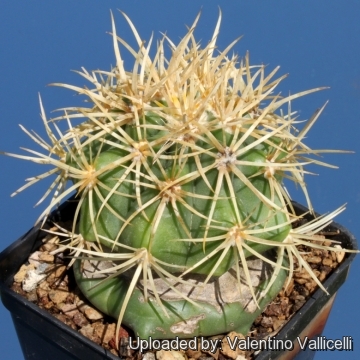 Ferocactus diguetii Photo by: Valentino Vallicelli
Ferocactus diguetii Photo by: Valentino Vallicelli Ferocactus diguetii Photo by: Valentino Vallicelli
Ferocactus diguetii Photo by: Valentino Vallicelli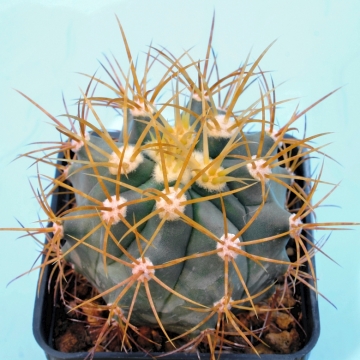 The giant barrel cactus (Ferocactus diguetii) is endemic to the Baja Peninsula and a few of the islands. Photo by: Cactus Art
The giant barrel cactus (Ferocactus diguetii) is endemic to the Baja Peninsula and a few of the islands. Photo by: Cactus Art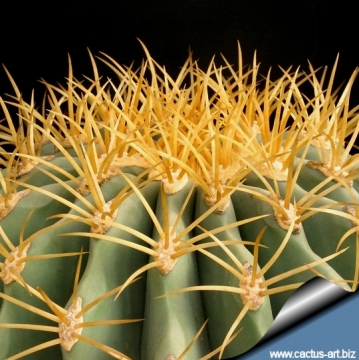 Ferocactus diguetii Photo by: Cactus Art
Ferocactus diguetii Photo by: Cactus Art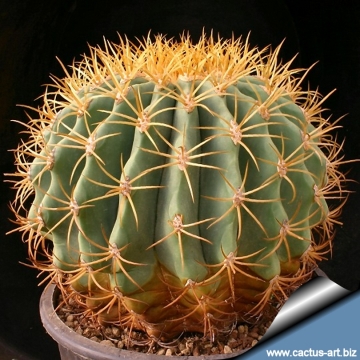 Some individuals on Isla Santa Catalina are over 3.5 m tall. Photo by: Cactus Art
Some individuals on Isla Santa Catalina are over 3.5 m tall. Photo by: Cactus Art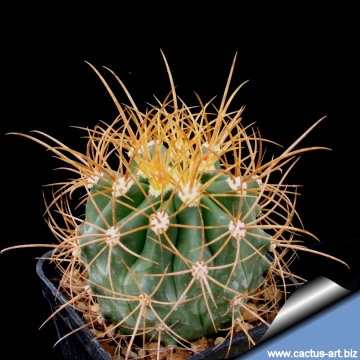 Ferocactus diguetii Photo by: Cactus Art
Ferocactus diguetii Photo by: Cactus ArtCultivation and Propagation: Slow growing to start, but it does well under cultivation. Use very draining soil, water during the aestival growth cycle (this plant needs plenty of water). But it's necessary to avoid wetting the bodies of these plants while they are in sunlight. A wet cactus in the sun light can cause sun burning which can lead to scars or even fungal infections, and death.
Needs full sun. Keep dry at 10°C in winter, but it can tolerate sporadic light frost.
Propagation: Seeds are the only way of reproducing.
















